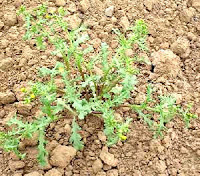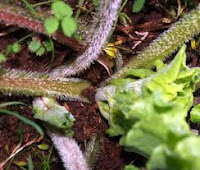OLEANDER, NERIUM OLEANDER, KANER IN URDU
You may not recognize the name but you will probably recognize this poisonous plant with its pink, white or red flowers which bloom from May to October, depending on where you live. It graces the roadsides in Greece Sicily Italy Portugal Pakistan California US
 Whenever I see these bushes growing in the middle of the motorways here in
Whenever I see these bushes growing in the middle of the motorways here in The oleander is toxic although not many deaths have been attributed to it, although I’m told that the seeds are particularly useful as a poison as it is not always noticed. Because all parts of this plant are toxic it is not recommended to use it as firewood or skewers for barbecues. It is poisonous for people and animals if ingested, but has been used in traditional medicine systems for centuries.
 Oleanders have leaves which look a little like those of the olive tree, but they are not related as the oleander is a member of the dogbane family or Apocynaceae family. It is believed to be the onotheras of Theophrastus who believed that the root when given to someone in wine improves their temper and makes them “gentle and cheerful.” Pliny concurred with Dioscorides that it could be an antidote to the bites of serpents, and this is what Dioscorides says of oleander in his De Materia Medica Book IV page 82 which was written in the first century AD.
Oleanders have leaves which look a little like those of the olive tree, but they are not related as the oleander is a member of the dogbane family or Apocynaceae family. It is believed to be the onotheras of Theophrastus who believed that the root when given to someone in wine improves their temper and makes them “gentle and cheerful.” Pliny concurred with Dioscorides that it could be an antidote to the bites of serpents, and this is what Dioscorides says of oleander in his De Materia Medica Book IV page 82 which was written in the first century AD. “Nerion, which some call Rododaphne, some Rhododendron . . . grows in enclosed greens and sea-bordering places; in places near rivers. But ye flower and the leaves have a power destructive of dogs; of Asses; of Mules; and of most four-footed living creatures, but a preserving one of men, being drank with wine against the bitings of venemous beasts; ye more if you mixed it with Rue, but ye more weak sort of living creature, as goats; sheep, die, if they drink ye maceration of them.”
John Gerard the 16th century English herbalist tells us what Galen another ancient physician said about oleander, but omits to give credit to Dioscorides, if we compare the two pieces of text they are much the same. Gerard could be considered guilty of plagiarism. Here is what he wrote about oleander:-
"This tree being outwardly applied, as Galen saith, hath a digesting faculty; but if it be inwardly taken it is deadly and poisonsome, not only to men, but also to most kinds of beasts.
 The flowers and leaves kill dogs, asses, mules, and very many of other four footed beasts: but if men drink them in wine they are a remedy against the bitings of Serpents, and the rather if Rue be added.
The flowers and leaves kill dogs, asses, mules, and very many of other four footed beasts: but if men drink them in wine they are a remedy against the bitings of Serpents, and the rather if Rue be added. The weaker sort of cattle, as sheep and goats, if they drink the water wherein the leaves have been steeped, are sure to die."
Oleanders were depicted in Roman murals quite frequently along with bay trees and myrtles. One famous mural is that in a subterranean chamber of Livia’s Villa in Porta Prima , Italy
In different traditional medicinal systems oleanders have been used in poultices to relieve backache; the fruit has been applied to the body to promote sweat in poultices according to the Hortus Sanitatis a 15th century herbal. It also says that the flowers provoke sneezing so could be used as snuff was. It was once believed that the plant was fatal to head lice and fleas.
 The macerated leaves were applied topically to promote hair growth and for syphilis symptoms and other skin diseases. Oleander has been used by herbalists for centuries to treat all kinds of illnesses from skin problems, to epilepsy, to induce miscarriages, as emetics and heart tonics. A decoction of the leaves has been used for gingivitis and oral problems. The plant contains the cardiac glycosides oleandrin and oleandrigenin which can be toxic when ingested, but they seem to boost the immune system of cancer patients when given in small controlled doses. It is believed that oleandrin might have antineoplastic activity and so can help in our fight against cancer.
The macerated leaves were applied topically to promote hair growth and for syphilis symptoms and other skin diseases. Oleander has been used by herbalists for centuries to treat all kinds of illnesses from skin problems, to epilepsy, to induce miscarriages, as emetics and heart tonics. A decoction of the leaves has been used for gingivitis and oral problems. The plant contains the cardiac glycosides oleandrin and oleandrigenin which can be toxic when ingested, but they seem to boost the immune system of cancer patients when given in small controlled doses. It is believed that oleandrin might have antineoplastic activity and so can help in our fight against cancer. It has, in recent years been hailed as an alternative cancer treatment as the first phase of clinical trials have been a success reportedly. The US FDA has said that extracts of the leaves are safe enough to be administered orally and has approved clinical testing, which is now in its second phase as of 2011. Oleander contains cardiac glycosides which are the substances being investigated.
As with aak (Calotropis procera) this plant can be fatal, but it can also be beneficial to our health.
















































